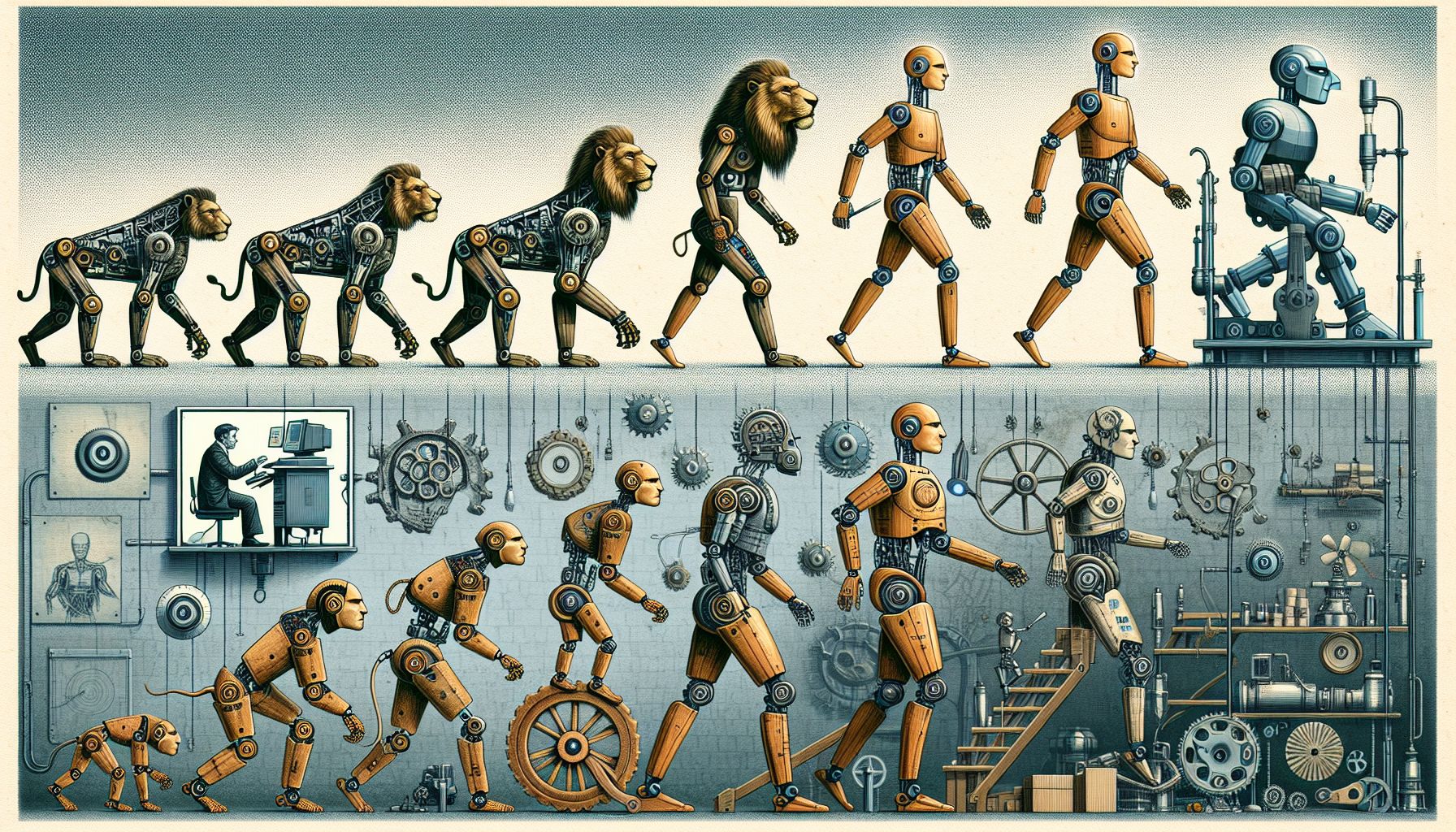📌 Let’s explore the topic in depth and see what insights we can uncover.
⚡ “From Leonardo Da Vinci’s mechanical knight to today’s AI-powered machines, robots have been in the works for over five centuries. Prepare to be awestruck as we unravel the surprising journey of robotics, an odyssey that spans across time and space!”
Imagine a world where robots are integrated seamlessly into our daily lives. Where they could perform complex tasks with speed and precision, from cooking meals and cleaning homes to providing medical assistance and exploring space. Sounds fantastical, right? But the reality is, we are already living in a world where robotics is making significant strides. Today, we will take you on an exciting journey through the evolution of robotics, from the genius mind of Leonardo Da Vinci to the incredible world of Artificial Intelligence. This blog post offers a fascinating look into the history of robotics, its evolution, and how it has shaped our world and will continue to shape our future. So, buckle up for a ride through time, traversing the ages of man’s fascination with creating mechanized beings and the technological advancements that have shaped the field of robotics.
📜 Ancient Beginnings: Automatons and Da Vinci’s Robot

"From Da Vinci's Sketches to AI's Masterpieces"
The history of robots dates back to ancient times, with early civilizations creating rudimentary automatons. These devices were primarily used for entertainment, religious rituals, or demonstrating scientific principles. For example, the ancient Greeks developed steam-powered devices and mechanical birds, while the Chinese created automated figures for festivals. However, it was the genius of Leonardo da Vinci that first envisioned the concept of humanoid robots. In the late 15th century, Da Vinci sketched plans for a robotic knight, a mechanized suit of armor that could sit, stand, and move its arms. The design, although never built in Da Vinci’s lifetime, is considered the first real plan for a human-like robot.
🛠️ The Industrial Revolution: The Birth of Modern Robotics
The Industrial Revolution in the 18th and 19th centuries brought about significant advancements in technology and machinery. This period saw the birth of programmable machines, such as the Jacquard Loom, which used punch cards to weave intricate patterns automatically. The term “robot” itself was coined in 1920 by Czech writer Karel Čapek in his play R.U.R. (Rossum’s Universal Robots). The play depicted a future where artificial beings could perform tasks without human intervention, a concept that would become central to modern robotics. The journey into modern robotics truly began in the 1950s with the development of the first programmable robot named Unimate. Created by engineer Joseph Engelberger and inventor George Devol, Unimate was used for die casting handling and spot welding in a General Motors plant, marking the beginning of robotics in industry.
💡 The Digital Age: Robotics and AI
The advent of the digital age further accelerated the evolution of robotics. The creation of microprocessors and advanced sensors allowed robots to be more precise, faster, and capable of performing complex tasks. Robots began to be used in various fields, from manufacturing and healthcare to space exploration and entertainment. The late 20th and early 21st century saw the rise of robotics in everyday life, with robotic vacuum cleaners, drones, and even autonomous cars becoming a reality. Robots have also proven valuable in dangerous situations, with bomb disposal robots, underwater exploration drones, and space rovers like NASA’s Mars Rover. However, the most significant advancement in modern robotics is the integration of Artificial Intelligence (AI). With AI, robots can learn from their experiences, adapt to new situations, and make decisions independently. This has opened up exciting possibilities, from AI-assisted surgery and elder care robots to personal assistants like Siri and Alexa.
🤖 Robotics Today: From Science Fiction to Reality
Today, robotics is no longer just the realm of science fiction. Robots have become an integral part of our lives, improving productivity, safety, and convenience. They’re being used in an array of applications, from automated manufacturing lines and precision agriculture to therapeutic robotics and AI-enabled customer service. Notably, the field of robotics has been instrumental in the fight against the COVID-19 pandemic. Robots have been used for disinfecting areas, delivering medical supplies, and even helping in remote patient care. 🧩 As for We, they’re also witnessing the rise of social robots that can interact with humans and understand human emotions. These robots, such as SoftBank’s Pepper and Boston Dynamics’ Spot, are blurring the lines between humans and machines, marking a significant milestone in the evolution of robotics.
🧭 Conclusion: The Future of Robotics
The journey of robotics from Da Vinci’s sketches to advanced AI-powered robots has been nothing short of remarkable. It’s a testament to human ingenuity and our relentless pursuit of innovation. As we move forward, the field of robotics promises even more exciting possibilities. We envision a future where robots will work alongside humans in harmony, enhancing our capabilities and making our lives easier. From self-driving cars and AI-powered personal assistants to robots that can aid in space exploration and disaster response, the future of robotics is bright and full of potential. In conclusion, the evolution of robotics is a fascinating journey that reflects humanity’s progress and technological advancement. It’s a journey that is far from over, as we continue to push the boundaries of what robots can do, shaping our future in ways we can only imagine. So, here’s to a future where robots are not just machines, but partners in our daily lives, contributing to our society in meaningful ways. 🥂
🚀 Curious about the future? Stick around for more discoveries ahead!
